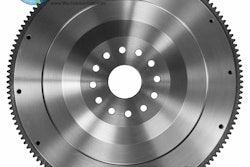This year’s Commercial Vehicle Safety Alliance (CVSA) International Roadcheck, set for June 6-8, serves as a reminder of the collective difference that fleets and owner-operators can make through proper safety and maintenance practices.
“Roadcheck covers just three days, but being prepared and running safe, well-maintained trucks requires year-round attention,” says Fred Andersky, Bendix director of government and industry affairs. “Bendix’s dedication to safety – like that of our partners and fleets, owner-operators, and drivers everywhere – never takes a break.”
International Roadcheck, the world’s largest targeted commercial vehicle enforcement program, marks its 30thyear this spring, and has involved more than 1.5 million roadside inspections since its inception. On average, nearly 17 trucks and buses are expected to be examined every minute in Canada, the United States and Mexico during the 72-hour period. Most of these vehicles will undergo the North American Standard Level 1 Inspection, a 37-step procedure reviewing both driver operating requirements and a vehicle’s mechanical fitness.
This year’s program includes a special emphasis on cargo securement – but that doesn’t mean there will be less scrutiny of brake and wheel-end issues. During last year’s International Roadcheck, brake adjustment and brake system violations combined to represent 45.7 percent of the violations that led to vehicles being placed out-of-service.
Two-pronged approach to maintenance
Regular and thorough maintenance is a key component of safe commercial vehicle operation, and Bendix stresses a two-level approach.
On one level is the pre-trip visual inspection. Professional drivers never get behind the wheel without a walk-around look for loose hoses, damaged or dangling brake components like air chambers and pushrods, and similar obvious problems. If a vehicle is equipped with an active safety system that includes a forward-facing radar unit or camera, these components need to be kept clear of obstructions like snow, ice, and road debris.
The second level is preventive maintenance – the regularly scheduled, bumper-to-bumper review of a vehicle. Where the air brakes are concerned, in-the-shop inspections should include conducting a 90 to 100 psi brake application and listening for leaks; examining friction for minimum thickness and good condition; checking rotors or drums for signs of dragging brakes or friction issues; and measuring the chamber stroke at each wheel-end to make sure the brakes are in proper adjustment. Violations in any of these categories can lead to fines or being placed out-of-service under CVSA guidelines.
Additionally, if it’s time to replace any parts of the braking system – particularly in the case of relining brakes – Bendix stresses the importance of selecting components that will ensure the original equipment manufacturer (OEM) requirements are met. For example, not all friction that is marketed as acceptable under today’s reduced stopping distance (RSD) regulations will actually perform to that standard, so Bendix recommends replacing like-for-like OEM friction. This is the best way to maintain your vehicle’s braking performance in stopping distance and wear when replacing linings on vehicles equipped with RSD brakes.
Similarly, when considering remanufactured brake shoes for drum brakes, fleets and owner-operators should choose providers that re-coin shoes back to their OEM-engineered shape, versus those that just reline shoes with new friction. Because even normal use exposes brake shoes to tremendous force and temperature changes over their life cycle, deformation occurs over time. Relining a shoe that hasn’t been coined back to its original shape through a remanufacturing process can lead to problems like reduced stopping power and premature wear, since the shoe lacks the correct geometry to provide full contact between the friction and drum.
“Achieving the best, safest performance from a braking system means getting the most out of each part,” says Keith McComsey, director, marketing and customer solutions, Bendix Spicer Foundation Brake (BSFB).
“And it continues up the line with connected safety systems: Just like the stopping power of a high performance brake can be undercut by inferior friction or a twisted shoe, the effectiveness of a full-stability or collision mitigation system will be negatively impacted if the brakes aren’t performing at their peak.”
Training and technical know-how
Because safety is a collective responsibility, Bendix has long viewed the sharing of up-to-date and in-depth knowledge and training as instrumental in keeping commercial vehicles on the road and in safe operating condition.
“The insight and experience of certified technicians has always been an irreplaceable part of maintaining safety components and technologies, and is especially important in today’s rapidly evolving environment,” Andersky says. “Whether in person, online, by phone or by computer, Bendix offers training and advice 24 hours a day all year long to fit anyone’s schedule and needs.”
Launched in 2013, brake-school.com – the Bendix On-Line Brake School – offers more than 70 courses covering everything from collision mitigation technologies to slack adjusters, including access to Bendix’s comprehensive and interactive Air Brake Training course. The in-person Bendix Brake Training School, consisting of multi-day courses available across North America, is one of the industry’s longest-running training programs. And Bendix’s Knowledge Dock at knowledge-dock.com, serves as a multimedia repository that helps trucking professionals stay connected through updates on the latest information in truck operation, maintenance, and safety. It includes an archive of the Bendix Tech Tips series, as well as videos, blog posts, podcasts, and white papers.












